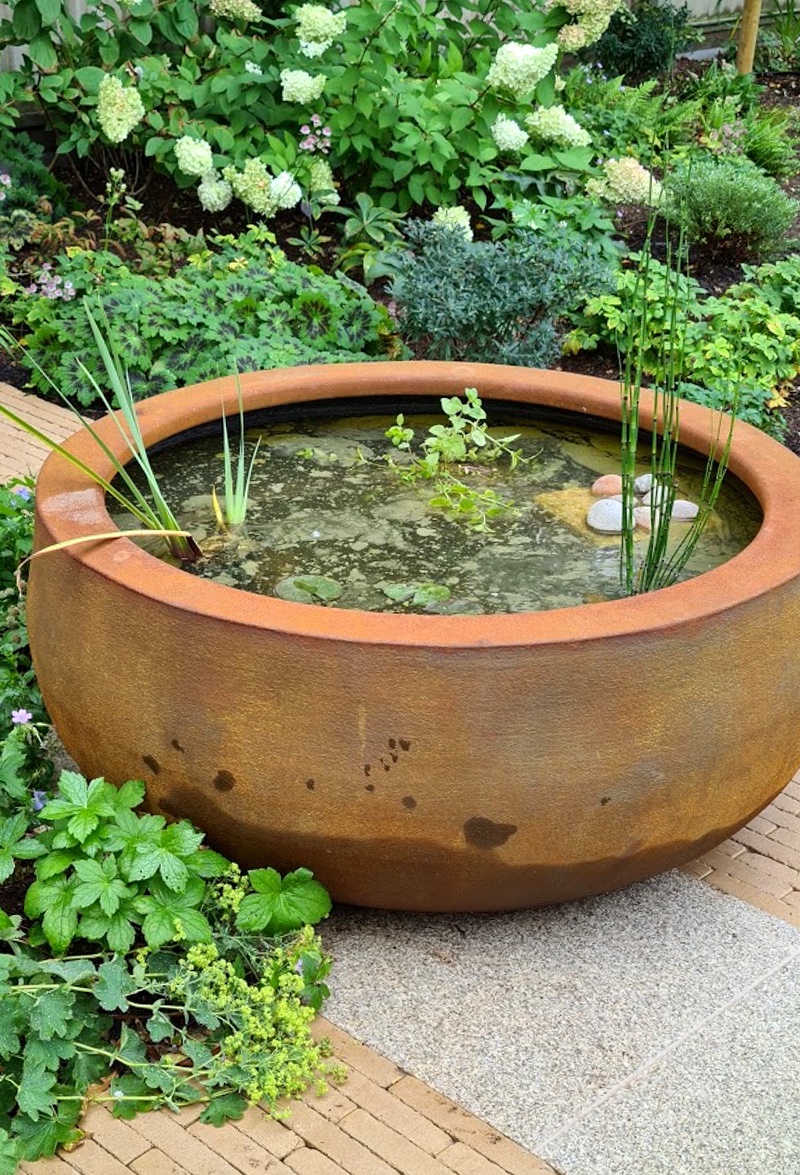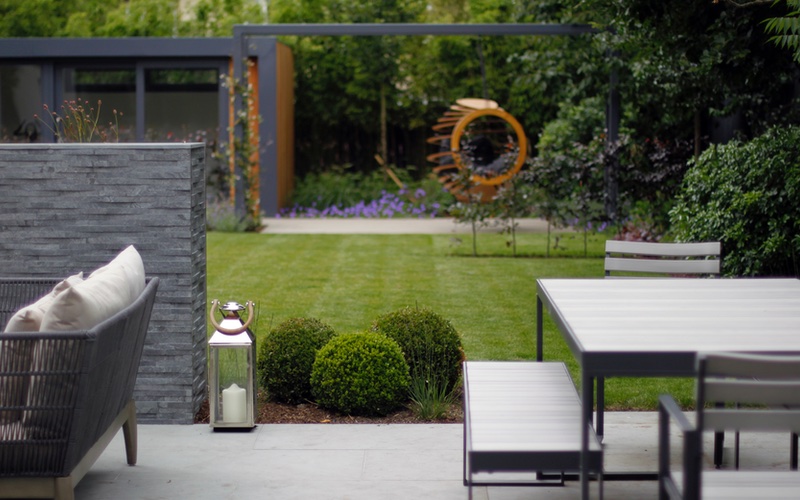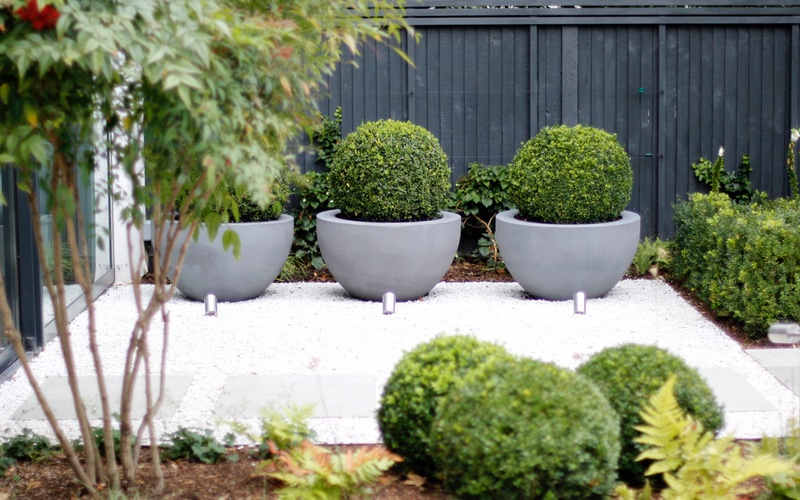THE LANDSCAPING SOLUTIONS BLOG
Welcome to our Blog. Inspiration, updates and industry trends from the team at Landscaping Solutions.
THE RISE OF REWILDING
Rewilding is fortunately gaining traction, says Landscaping Solutions MD Ben West, and we all need to embrace it.

Embracing the concept of rewilding will help reduce biodiversity loss.
Of all the global-scale predicaments we currently face, I find biodiversity loss to be the most pernicious. The systematic, often wilful degradation of the source of our being and the accompanying depletion of the myriad wonders with which it is bejewelled, represent a deep source of personal pain and sorrow.
Furthermore, it’s an embedded phenomena. In 1987, I joined the Young Ornithologists’ Club and from the outset was haunted by the spectre of declining bird numbers reported through the pages of its quarterly publication. Later, I developed an interest in botany and lepidoptera and discovered these beset with the same issues: habitat destruction, poor land management, pollution and pesticides.
Across the board, it seems our relationship with nature is a dysfunctional one. This is doubly troubling for those of us who’ve had their lives immeasurably enriched through a love of nature, yet find ourselves complicit in its destruction by dint of being active in a system geared to that end. I’ve been carrying this baggage around for years. None of my school friends or subsequent work colleagues seemed conscious of these problems nor did they appear to care once awakened to them. Older folks, my parents included, dismissed the losses as collateral damage in the wake of ‘progress’. “Toward what?” I asked. A question invariably met with silence or a shrugging of shoulders.
However, lately it seems something has shifted. Awareness has spread and with it a commitment to change. Shoulders that once shrugged now seem set to carry the weight of the work ahead. Solutions are coming to the fore, most promisingly in the form of ‘rewilding’; the idea that depleted landscapes can be regenerated by allowing natural processes to re-emerge. In fact, it’s inaccurate to call rewilding an ‘idea’ as it’s now a proven model across Europe and well established in Britain as evidenced by the Carrigan Wildwood, Glenfenshie and Abernethy projects in Scotland and Ennerdale in northern England. The astonishing biological resurrection of the flagship British rewilding programme at the Knepp estate in Sussex and the bestseller status of ‘Wilding’, the story of its genesis by Isabella Tree, suggest this movement may be ready to roll out across the lowlands of southern England. Most recently, the ambitious WildEast initiative has pledged to rewild 250,000ha of East Anglia whilst simultaneously pushing the concept beyond the physical landscape and into the cultural practices and everyday lives of the areas’ inhabitants.

Rewilding allows once depleted landscapes to regenerate.
The acknowledgment of this cultural aspect emphasises a key point; rewilding is not just about the reinstatement of bison, beavers and wolves; nor does it necessitate the acquisition of vast tracts of land. Rewilding works on all levels to weave together the unravelled warp and weft of life’s rich tapestry and recognises humanity as an important thread.
Rewilding is also about wresting back dominion over consciousness from deceptive forces. We must first rewild ourselves before we can rewild our planet. What does that mean? Well, I’ve written previously on the Landscaping Solutions blog, of the need to relinquish our received wisdom around what constitutes ‘good gardening’ and acknowledge that we have increasingly been led down the garden path by snake oil salesmen. If you’re looking for evidence, consider how the ‘garden centre experience’ has changed over the past 30 years or so. Too many of our established practices are turning gardens into biological deserts when they are often the last refuge for wildlife in the face of habitat loss. As a reaction to this, I have, over the last couple of years, embraced the concept of rewilding in my own modest plot, and next month I shall share my experiences of that journey with you.
REGENERATIVE GARDENING
Landscaping Solutions MD Ben West reminds us of the beneficial impact we can have on a garden’s biodiversity with thoughtful intervention.

An example of a biodiverse garden by Landscaping Solutions.
Hypericum perforatum, or ‘St John’s Wort’, is a common wildflower used traditionally as a wound herb and more recently as a treatment for depression or a general tonic for lifting the spirits. The plant is named after John the Baptist who is said to have been born six months before Jesus of Nazareth on 24 June and is venerated in the Christian faith as the one who prepared the way for Christ the Redeemer to carry out his work.

The common wildflower Hypericum perforatum, or ‘St John’s Wort’.
How fitting, then, that on St John’s Day I had the most uplifting and redeeming experience of an otherwise tumultuous year when I tuned in to an online lecture by Fergus Garrett on the subject of biodiversity at Great Dixter House in Sussex. I came away healed, hopeful and with a sense that his vision could prepare the ground for our work as ‘regenerative gardeners’.
Between 2017 and 2019, Fergus commissioned a biodiversity audit of the Dixter estate in order to confirm his hunch that the gardens represented a special place for wildlife and inform his team of how best to manage the land going forward. The audit uncovered a range of interesting findings, the most important, in my opinion, being the discovery that the abundance and variety of life in and around the house and gardens outweighed that of the estate’s hedgerows, meadows, woods and farmland.
The gardens harbour a number of nationally rare and scarce bees, wasps, hoverflies, moths and spiders. One of the ecologists proclaimed the gardens to be one of the most biologically rich sites he had studied in 30 years of surveying. So, what are they doing right at Dixter?
In my last article for the Landscaping Solutions blog, I wrote of the University of Sheffield’s ‘BUGS’ project which studied factors influencing biodiversity in gardens. The BUGS team discovered a number of recurring garden features which increased the quantity and variety of species. All these features are present at Dixter. There is an emphasis on refraining from chemical use and over-zealous mowing. Composting is championed, along with the creation of brash piles and provision of standing dead wood.

Ponds, water courses and a little untidiness not only add an aesthetic charm but also provide a practical habitat for wildlife.
The garden is famous for its successional planting providing early spring flowering fruit trees, a long-lasting summer mix of natives and exotics and diverse late season pollen and nectar sources. Hard structures have lots of nooks and crannies in which insects, birds and mammals can find shelter and raise young. Ponds and water courses are present and, crucially, there is recognition that ‘untidiness’ adds aesthetic charm as well as practical habitat.
The garden at Dixter is a dynamic and intensely managed landscape in a constant state of change. Man-made change. There is a pervading sense that, for wildlife to thrive, human intervention should be kept to a minimum. The hand of man is generally thought to be a destructive one. However, Dixter highlights humanity’s beneficial influence on the health of the planet and how thoughtful horticulture has a key role in improving biodiversity.
It’s easy to dismiss mankind as a plague on the face of the planet, but examples like Dixter remind us of the positive nature of our position in the web of life and how important gardens and gardeners are to how the picture might pan out. Which impressions will we choose to leave on the canvas of the twenty-first century? The current background is a Turneresque tempest. Will we overlay this with a depiction of the gates of hell or the Garden of Eden? The choice is ours.
Thanks and gratitude to Helen Gazeley for directing me toward the Dixter lecture. Watch it yourself here: www.vimeo.com/ondemand/biodiversitygreatdixter
A WILD VARIETY
Landscaping Solutions MD Ben West explains why only using native plants is not necessarily the best option.

Diverse late Summer herbaceous perennials in a garden built and maintained by Landscaping Solutions in Twickenham, South West London.
In one of our recent blog articles, I extolled the virtues of garden ‘weeds’ in light of their potential to re-connect us with nature; I proposed a move away from our entrenched revulsion toward a position of reverence. As much as I love native wildflowers and have learned much about myself and the wider world from a close relationship with them (not to mention benefitted immeasurably from their medicinal and culinary properties), I don’t want to give the impression I’m an advocate of allowing our plots to go completely to seed. Rather, I’m looking to promote a more laissez faire attitude that permits weeds be cherished rather than demonised in order to improve the biodiversity of our gardens, and our nation, as a consequence.
The key component here is the notion of surrender, of letting go of deeply held opinions when faced with evidence that suggests they might be damaging or just simply unfounded. This is a lesson we can all take on board whatever our feelings on what constitutes a successful garden.
For instance, proponents of wildlife gardening have traditionally espoused using only ‘native’ plants. However, research by Dr. Ken Thompson and his colleagues at the University of Sheffield suggests otherwise. Ken is a plant ecologist who was part of the ‘Biodiversity in Urban Gardens’ or ‘BUGS’ project which investigated the significance of urban gardens in Sheffield for natural diversity back in 2000. Their findings blew apart the doctrine that held ‘native’ superior to ‘alien’ plants in terms of their ability to support wildlife. Ken and the team found that, so long as they delivered the goods in terms of providing food, shelter and a place to raise young, most wildlife didn’t much care for the origins of any particular plant. In fact, more importance rested on schemes that were diverse and varied in flower type and shape, rich in nectar and planted in swathes of the same species. Gardens providing successional planting and extended individual flowering periods also displayed increased biodiversity. In addition, pollinating insects showed a preference for plants closer to the ancestral species rather than highly modified versions such as double flowered varieties.

Ponds and water features are just one way of increasing biodiversity in a garden.
The BUGS project also discovered a list of other features those wishing to increase biodiversity should include in their gardens, namely trees, ponds, compost heaps, walls, hedges and, importantly, combinations of the above to provide variation and diversity. The project also stipulated avoiding the following elements: closely mown grass, extensive areas of hard surfacing, the use of chemicals and, last but not least, excessive tidiness.
It has always been my anecdotal experience that nature loves a bit of ordered chaos and this was supported by the BUGS project findings. Think of the grass snake in the compost heap, the whitethroat nest in the bramble patch or the pile of cinnabar moth caterpillars on that scrap of ragwort you forgot to weed out. This is the very essence of wildlife gardening and affirms why a little bit of ‘conscious neglect’ goes a long way. It is important not to understate the significance of loosening up our attitudes. If we are to redress the imbalance that 50+ years of over-zealous gardening has instilled, then we must stop treating gardens like we do the rest of our uptight, downtrodden and increasingly straight-jacketed lives, whichever side of the fence we are on.

An example of ordered chaos in a garden built and maintained by Landscaping Solutions.
Those wishing to gain a sharper understanding of what wildlife gardening is really all about should read the illuminating ‘No Nettles Required’ by Ken Thompson.
Feel free to drop us a line with your thoughts and feedback on this article at info@landscapingsolutionsltd.co.uk.
AN AWARD-WINNING GARDEN DESIGN ENHANCES YOUR HOME

The design by Cassandra Crouch meant that the garden and house felt right together.
At Landscaping Solutions we work with some of the leading garden designers in the UK. We regard our role as providing a safe pair of hands when it comes to delivering the design, taking worry off the shoulders of both garden designer and householder. This is exactly what we did for Cassandra Crouch with this beautiful space on the edge of Richmond Park, South West London.

BALI award-winning garden, in South West London, designed by Cassandra Crouch.
Typical of family gardens, this one had a wide-ranging brief. It needed areas for:
- adult exercise and children’s play
- entertaining and outdoor cooking, during the day and after dark
- for rest and relaxation
- for storage
And while the clients were not particularly keen on gardening, they did want a variety of heights and textures in the planting to create year-round interest.
The house has a rectilinear, minimalist feel, and Cassandra’s design gives it a strong sense of place with the use and overlap of strong squares and rectangles in the design - even the trampoline is square. Cassandra’s Crouch’s design marries the garden to the building, creating a relaxing space that feels right at home.

Beams made by Leighton Ironcraft support a hanging seat that offers a contrasting shape to the lines and rectangles.
Generous beams support the hanging seat; grassed and paved areas have straight edges and ninety-degree angles on their corners; the fireplace feature and barbecue are strongly rectangular.
A design like this needs a highly accurate finish - imperfections in angles and straight lines are immediately visible. At the same time, the variety of materials requires skill and experience to integrate them seamlessly, as well as very careful attention to detail to ensure that levels match and surfaces move smoothly from one texture to another.
We pride ourselves at Landscaping Solutions on creating a luxury finish. “They are passionate about construction,” says Cassandra, “and strive to achieve very high standards.”

Sawn Grey Yorkstone and Smoked Oak Millboard combine textures in this garden designed by Cassandra Crouch in South West London.
High-quality materials completed the sense of luxury. The patio uses Sawn Grey Yorkstone (supplied by London Stone) which tones beautifully with Millboard’s Enhanced Grain Smoked Oak composite decking, laid at the access to the house and around the gym/studio, while adding contrasting texture.
This was a garden design that required a wide range of landscaping skills. As well as laying different materials and recycling existing paving to allow access to a storage area hidden behind the gym, we installed textured tile cladding and stainless steel beading to the fireplace, put in the barbecue and then rendered and painted its housing to tone with the overall colour scheme. Light-coloured aggregate around paving stones was retained in a stabilising system to prevent gravel migrating to beds and paving and to make a stable surface to walk on.

Round box balls, uplit at night, add contrasting shape and texture in a garden which the owners wanted to be easy to look after.
Lighting, which picks out shape and texture at night and focuses on the barbecue and seating area for extended evening use, was installed by Electrosafe Landscape Lighting Ltd, overseen by us at Landscaping Solutions. The drip-irrigation system, which we installed, will reduce work in the garden and ensure the survival of plants while the home-owner is on holiday.
Badgers!
So far, so normal for our teams at Landscaping Solutions. However, this build introduced an interesting additional element - badgers in a neighbouring garden.
Badgers are protected by law, as are their setts, and if works needs to be done in their vicinity, a licence is required from Natural England.
Landscaping Solutions happily shouldered the responsibility of ensuring everything was done as it should be. Natural England required the installation of night cameras to monitor sett entrances for two weeks. With no badger activity recorded, work could progress.
“I was really pleased to have had the challenge,” says Landscaping Solutions’ Ben West. “It means we learned best practice for the situation and allowed me to get up close and personal with one of my favourite British mammals. I’ve been badger-watching since I was a young lad so it was second nature for me to want to do the best by the badgers.”

Textured tiles clad the outdoor fireplace with stainless steel beading to finish the edges.
In the meantime we shifted our schedule to make progress in other areas of the garden, away from the badger area. Good communication with garden designer Cassandra Crouch and the homeowners meant we could be flexible in our approach and work out an efficient reorganisation of the sequence of jobs required.
We completed the build in a couple of months, in June 2016. It went on to win us our fourth BALI award, and our second Principal Award, this time in the category of Domestic Garden Construction (£60K-£100K).
“The team are professional and pleasant to work with,” said Cassandra. “Both the client and myself are extremely happy with the result. I would not hesitate to recommend them to clients in the future.”
See our other award-winning gardens.
Contact Ben West to find out how we can help you create a luxury garden to the highest standards for your clients. If you’re a home-owner looking to enhance your living space, we can refer you to talented garden designers. Just get in touch to discuss.